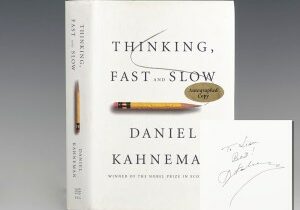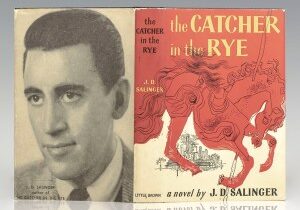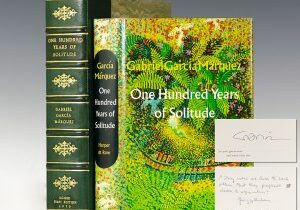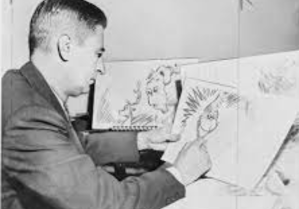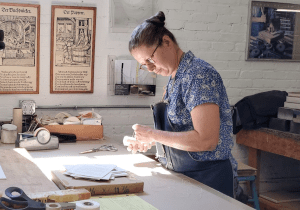 English author Virginia Woolf was considered one of the greatest modernists of the 20th century. Woolf was born in London as Adeline Virginia Stephen by parents Julia and Leslie Stephen, a notable author, historian, and mountaineer. Her parents home-schooled her in a household of three children from three marriages total, as both parents had been previously married and widowed. Leslie’s prominence as an editor and critic, as well as Julia’s well-connectedness to Pre-Raphaelite models for artists and photographers, meant that Woolf was raised in an environment rich with culture, literature, and frequent visits from high figures in Victorian society. Yet despite Woolf’s intellectual upbringing, she watched her brothers go to school while her parents denied her a formal education. Women’s right to education became something that Virginia Woolf stood for in her lifetime, especially in her work.
English author Virginia Woolf was considered one of the greatest modernists of the 20th century. Woolf was born in London as Adeline Virginia Stephen by parents Julia and Leslie Stephen, a notable author, historian, and mountaineer. Her parents home-schooled her in a household of three children from three marriages total, as both parents had been previously married and widowed. Leslie’s prominence as an editor and critic, as well as Julia’s well-connectedness to Pre-Raphaelite models for artists and photographers, meant that Woolf was raised in an environment rich with culture, literature, and frequent visits from high figures in Victorian society. Yet despite Woolf’s intellectual upbringing, she watched her brothers go to school while her parents denied her a formal education. Women’s right to education became something that Virginia Woolf stood for in her lifetime, especially in her work.
Virginia Woolf’s published works offered social commentary on topics in feminism that was revolutionary for a woman author of the time. Woolf’s essay A Room of One’s Own, for example, argued for both a physical and figurative space for women in a literary industry dominated primarily by men. She had by this point in her life already taken courses at King’s College London, which brought her into contact with great women’s education reformers of the time, such as Lilian Faithfull and Clara Pater.
Published in May of 1925, Virginia Woolf’s Mrs. Dalloway tackles bold themes of feminism and mental illness, particularly in a Post-World War 1 society. The entire novel’s narrative is contained within one day, following characters around London as Clarissa gets ready for her party. The story primarily focuses on Clarissa, as she sees people throughout the day who trigger specific memories about her life, and Septimus, a shell-shocked war veteran whose “post-traumatic stress disorder” (though it was not called that at the time) is misunderstood by everyone around him. Shell shock experienced by veterans of World War I became a common theme in 20th century literature, and Woolf tackles it from the outside-in, commenting on how illness is misinterpreted through lenses clouded by each person’s cultural assumptions of the time.
Clarissa never ends up meeting Septimus in the novel, but learns of his death when it becomes the topic of conversation at her party. Critics have been able to draw parallels between Septimus’ post-traumatic stress disorder and the bipolar disorder Woolf was suspected to have had. Woolf had originally written the novel’s ending with Clarissa committing suicide during her own party, and only added Septimus later as Clarissa’s “dual character.”

Rare First Edition of Mrs. Dalloway by Virginia Woolf
Much like A Room of One’s Own, the novel is very concerned with time and space. Known for its disconnected narrative and stream-of-consciousness style, the novel was actually suspected to have been modeled after James Joyce’s Ulysses. Meanwhile the interior monologues within each character highlights the inner experience of an inter-war society, suggesting that mental illness can exist without being properly witnessed.
Clarissa Dalloway is visited by an old boyfriend during the day, triggering a voice in Clarissa’s mind that is very different from her behavior as a well-behaved politician’s wife. She remembers an old friend, Sally Seton, and how she idealized her free spirit and independence. Later at the party, Clarissa encounters Sally and sees that she is a non-working mother and housewife. Woolf uses these characters to underline the very real sexual and economic oppression of women at the time and how it results in the mentality of women from different classes; the naive self-centeredness of bourgeois women and the hunger and self-doubt of working women.
Though it doesn’t seem clear how the characters are connected throughout the book, it eventually comes together in a “new and delicate harmony.” As Clarissa finds her own connection and unexplained empathy with the death of Septimus, so does Woolf tie together the social invisibility of mental illness and the private suffering of women confined to their social roles.
Originally created from two short stories that Woolf had written previously, “Mrs Dalloway in Bond Street” and the unfinished “The Prime Minister,” Mrs. Dalloway was also considered a breakthrough work in style and structure of modern literature.
In Mrs. Dalloway Woolf breaks decisively with the fictional conventions of the realistic novel. The technique is almost orchestral, introducing and then interweaving the strains of the different characters’ thoughts, and finally engineering, through a subtle sequence of readjustments and realignments, a new and delicate harmony between them at the close of the book. Mrs. Dalloway thus initiated Woolf’s sequence of radical experiments with literary form, embodying a striking combination of fluid sympathy and secret resistance. Through the novel’s rapid transitions between apparently disconnected, but secretly related stories, Woolf was able to suggest the hazards of neatly pigeonholing human character according to social situation or gender. (Parker, 110-11)
Two first edition copies of Mrs. Dalloway are available in the rare original orange cloth, two of the nicest examples of this book we’ve seen.


